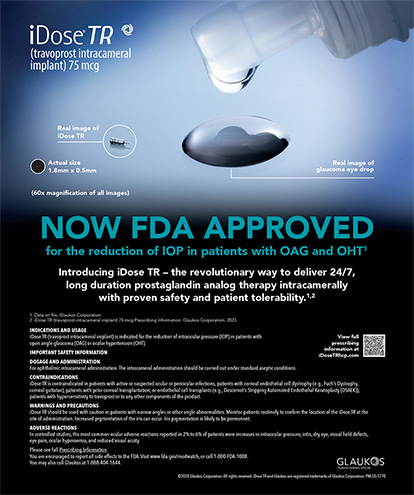Toxic anterior segment syndrome (TASS) involves an acute, sterile, postoperative inflammation that may occur after any anterior segment surgery. A nationwide outbreak of TASS occurred in late October/early November of 2005. It was found to be related to endotoxin contamination of balanced salt solution manufactured by Cytosol Laboratories Inc. (Braintree, MA) and distributed by Advanced Medical Optics, Inc. (Santa Ana, CA), as Endosol. Through the efforts of the Centers for Disease Control and Prevention in Atlanta and the Intermountain Ocular Research Center at the University of Utah in Salt Lake City, the solution was removed from the US market. The outbreak brought the entity of TASS to the attention of many ophthalmic surgeons who had been unaware of the condition.
A more recent epidemic of TASS began in March/early April of this year, with scattered centers throughout the US reporting cases of unexplained postoperative inflammation occurring on the day after uncomplicated surgery. The outbreak has expanded rapidly and is presently under investigation by a multidisciplinary team of investigators, including the Centers for Disease Control, the FDA, and epidemiologists as well as researchers from academic centers and industry. At press time, the exact etiology of this ongoing outbreak of TASS is unclear.
The recent epidemics have brought the issue of TASS to the forefront of ophthalmic medicine. The increased incidence of the syndrome has shed light on how important it is that surgeons and surgical centers' staffs be aware of this entity and be well informed of ways to help avoid potential cases of TASS as well as investigate and treat them when they occur. To that end, David Chang, MD, Cataract & Refractive Surgery Today, and I have put together a special focus on TASS for this issue.


